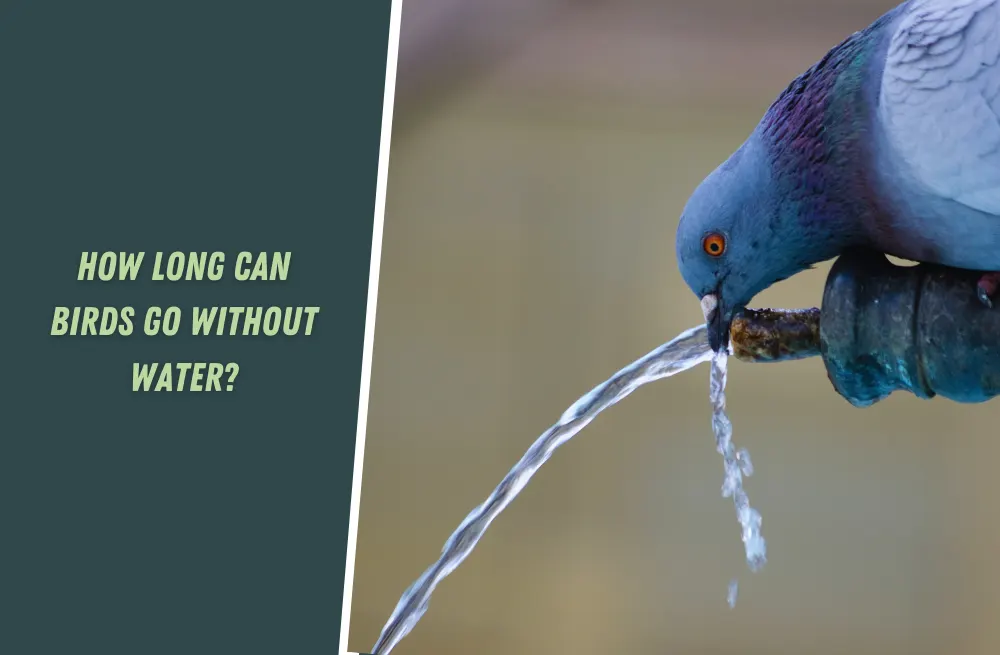Kangaroos are known for their powerful hind legs that allow them to leap great distances. However, there is a common myth that kangaroos cannot walk backwards. Similar to ostriches and alligators, kangaroos can turn around and walk backwards if they need to.
This myth originated from a Facebook post by Vernon Tava in 2013. One morning, he asked his friends on Facebook why kangaroos couldn’t walk backwards. The post quickly went viral, with many people sharing their opinions and answers.
But why can’t kangaroos walk backwards? The answer lies in their unique anatomy. Kangaroos have long tails that help them balance when they hop forward. When they try to move backward, their tail gets in the way and throws off their balance. Their hind legs are much stronger than their front legs, making it easier for them to move forward rather than backward.
But this doesn’t mean that kangaroos are completely incapable of moving in reverse. In fact, they can turn around and hop backward if they need to escape from danger or defend themselves from predators.
The myth that kangaroos cannot walk backwards is often associated with emus as well. Emus are also native to Australia and have a similar body structure as kangaroos. However, like kangaroos, emus can turn around and move backward if necessary.
Reasons Behind the Myth: Misconceptions about Kangaroo Anatomy

Misconceptions about kangaroo anatomy have been around for generations, leading to a variety of myths and misunderstandings. Here are some reasons behind these misconceptions:
Misconception about Kangaroo Tail Anatomy
One common myth is that kangaroos use their tails for balance when hopping. However, this is not entirely accurate. While the tail does help with balance, it primarily serves another purpose: as a powerful fifth leg. The tail acts as a counterbalance to the kangaroo’s body weight and helps propel them forward during movement.
Lack of Understanding About Kangaroo Hip Joints
Another misconception stems from a lack of understanding about kangaroo hip joints. Many people assume that kangaroos can only move their legs in a forward motion due to their unique anatomy. However, this is not true – kangaroos can actually rotate their legs at the hip joint, allowing them to move in any direction.
False Belief About Kangaroo Center of Gravity
Some people believe that kangaroos have an unusually high center of gravity due to their long legs and tail. This leads to the assumption that they are more likely to fall over or lose balance than other animals. However, this is not the case – in fact, kangaroos have a relatively low center of gravity compared to other large mammals.
Inaccurate Assumption About Kangaroo Leg Muscles
Many people assume that kangaroos’ leg muscles are incredibly strong due to their ability to hop long distances at high speeds. While it’s true that kangaroos have powerful leg muscles, they’re not necessarily stronger than those found in other animals of similar size and weight.
Limited Knowledge About Kangaroo Locomotion Patterns
Finally, many misconceptions about kangaroo anatomy stem from limited knowledge about how they move and behave in the wild. For example, some people believe that all kangaroos hop on two legs at all times – but there are actually several different types of kangaroo locomotion patterns, including walking and bounding.
Unique Limb Structure and Musculature of Kangaroos

Longer, Stronger Hind Legs
Kangaroos are known for their unique limb structure that allows them to move efficiently and quickly. Their hind legs are longer and stronger than their front legs, which gives them the ability to jump up to three times their own height. This is a crucial adaptation for kangaroos as they live in environments with vast open spaces where they need to cover large distances quickly.
Highly Developed Leg Muscles
The muscles in kangaroo’s legs are highly developed, allowing them to generate the power needed for their jumps and hops. The leg muscles work together like springs, storing energy when the kangaroo lands and releasing it during takeoff. This mechanism helps kangaroos conserve energy while moving at high speeds.
Pivoting Ability
While kangaroos cannot walk backwards due to their unique limb structure, they have another adaptation that allows them to change direction quickly. Kangaroos can pivot on one leg and hop in a different direction. This movement is called “pivoting,” which involves using one foot as an anchor while swinging the other leg around.
Comparison with Emu Legs
When comparing kangaroo legs with emu legs, another common Australian animal known for its speed and agility, we can see some differences. While both animals have long hind legs adapted for running fast, emus have three toes on each foot while kangaroos only have two toes on each foot. Emus rely more on their strong thigh muscles rather than calf muscles like kangaroos do.
Debunking the Myth: Evidence of Kangaroos Walking Backwards

Kangaroos are fascinating animals that have been the subject of many myths and legends. One such myth is that kangaroos can walk backwards. While it’s true that they can move in reverse, there is no evidence to support the idea that they can walk backwards.
Anatomy Makes It Difficult
Kangaroos have a unique anatomy that makes it difficult for them to walk backwards. Their long, powerful legs are designed for hopping, not walking. This means that their knees only bend in one direction, which makes it impossible for them to step back with one foot while keeping the other foot stationary. Their thick tails are used for balance while moving forward, but they don’t provide as much support when moving backward.
Using Their Tails
While kangaroos may not be able to walk backward like humans do, they can still move in reverse using their tails for balance. Kangaroos use their tails as a third leg when moving slowly or standing still, and this same technique allows them to move backward without losing their balance.
No Scientific Evidence
Despite the popular belief that kangaroos can walk backwards, there is no scientific evidence to support this claim. In fact, researchers who study kangaroo behavior have never observed a kangaroo walking backward in the wild or captivity.
Kangaroo Locomotion: Hopping vs. Walking

Kangaroos are known for their unique way of getting around – hopping. Unlike most other quadrupeds, kangaroos primarily use hopping as their main mode of transportation. This is due to their skeletal structure, which is designed for jumping and not walking.
Why do Kangaroos Hop instead of Walk?
The hind legs of a kangaroo are longer and stronger than their front legs, allowing them to hop with ease. Their feet are also adapted for hopping, with the middle toe being elongated and used as a spring-like mechanism to propel them forward. When hopping, kangaroos use less energy than when walking or running at the same speed, making it an efficient way for them to move around.
How does a Kangaroo Walk?
While kangaroos primarily hop, they can walk if needed. However, their walking motion is different from other quadrupeds. Kangaroos walk using a waddling motion where both hind legs move together followed by both front legs moving together in unison. This motion is slower and less efficient than hopping but allows them to conserve energy when they need to travel short distances.
Do Kangaroos Walk Backwards?
The answer to whether kangaroos can walk backwards is complicated and depends on the situation. In general, kangaroos are not well-suited for walking backward due to their skeletal structure and the mechanics of their hind legs. However, there have been instances where kangaroos have been observed walking backward in certain situations such as avoiding predators or backing up against an obstacle.
Can kangaroos jump backwards?

No, kangaroos are not capable of jumping backwards. Their unique hopping motion involves using their powerful hind legs to propel themselves forward. While they can change direction and make sharp turns while hopping, they cannot perform a backward jump. The anatomical structure of their legs and the mechanics of their hopping movement are primarily designed for forward propulsion.
Other Animals That Can’t Walk Backwards: Exploring Physical Limitations

Animals That Can’t Walk Backwards: Exploring Physical Limitations
Not all animals are created equal others have physical limitations that prevent them from doing so. In this section, we will explore some of the animals that cannot walk backward and the reasons behind their limitations.
Penguins: One of the Animals That Cannot Walk Backward
Penguins are known for their unique waddling walk on land, but did you know they cannot walk backward? This is because of their body structure, which is designed for swimming rather than walking on land. Penguins have short legs that are positioned far back on their bodies, making it difficult for them to move backward without losing balance. Instead, penguins use a series of hops and turns to change direction.
Humans Have Been Walking Forward for Millions of Years
Historians believe that humans have been walking forward for millions of years. Our feet are designed to move us forward efficiently, with our toes pointing straight ahead and our heels striking the ground first. While we can technically walk backward, it is not as natural or efficient as walking forward.
Bengal Tiger: The National Animal of India Cannot Walk Backward Due to Its Tail’s Balance
The Bengal tiger is one of the most majestic animals in the world and also one that cannot walk backward due to its tail’s balance. A tiger’s tail serves as a counterbalance while running or jumping, but it makes moving backward difficult since it throws off their center of gravity. As a result, tigers must turn around completely if they want to change direction.
The Importance of Forward Motion in Various Civilizations Around the World
Many civilizations around the world have recognized the importance of forward motion in everything from dance to daily life. For example:
- In Chinese culture, people believe that walking forward brings good luck and prosperity.
- In Hinduism, followers believe that walking clockwise around a temple or shrine brings blessings.
- In African dance, forward motion is used to symbolize progress and growth.
You might also like
- What do Kangaroos Look like When They are Born?
- Human vs Kangaroo: Who Wins the Ultimate Fight?
- How Many Kangaroos are there in Australia?
- What do Kangaroos Eat in the Desert?
- Can Kangaroos Move Their Legs Independently?
The Truth About Kangaroo Locomotion and Ability to Walk Backwards

Kangaroos are fascinating creatures that have captured the attention of people worldwide. One common question that has been asked repeatedly is whether kangaroos can walk backward or not. After examining kangaroo anatomy, physical abilities, and locomotion methods, it is clear that this myth has no basis in reality.
Kangaroo anatomy is often misunderstood, with many believing that their tails provide support for walking backward. However, the tail’s primary purpose is to help balance the kangaroo when hopping forward. Kangaroos have a unique limb structure and musculature that allows for efficient hopping but makes it difficult for them to move backward.
Despite popular belief, there is evidence of kangaroos walking backward in certain situations. However, it should be noted that this movement is rare and requires significant effort from the animal. Kangaroos are primarily designed for hopping forward as it conserves energy and provides greater speed and agility.
The debate over whether kangaroos can walk backward highlights an interesting point about animal locomotion. Many animals have physical limitations that prevent them from moving in certain ways. For example, horses cannot move their legs independently like humans can because their legs are connected by a single bone.







